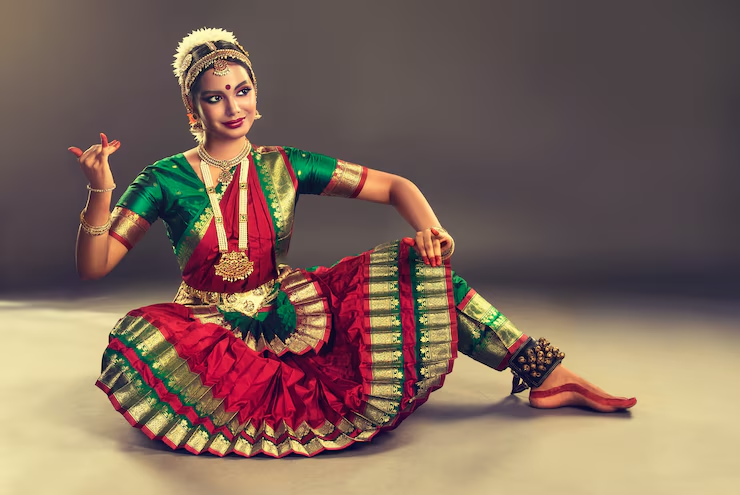Classical Dance of India represents a rich tapestry of culture and tradition that has evolved over centuries. Each dance form reflects the unique history, geography, and philosophy of the regions from which it originates. These dances not only serve as an expression of art but also embody spiritual and religious narratives that are central to Indian culture.
Historical Background
The history of Classical Dance in India can be traced back to ancient texts such as the Natya Shastra, written by Bharata Muni around 200 BCE to 200 CE. This comprehensive treatise lays down the foundations of performance arts in India, detailing aspects of dance, drama, and music. The significance of dance in Indian culture is further emphasized through its association with religious rituals and storytelling, portraying myths and legends that resonate with audiences across generations.
Major Styles of Classical Dance
India boasts several classical dance forms, each with distinct characteristics, techniques, and stories. Here are some of the prominent styles:
Bharatanatyam
Originating from Tamil Nadu, Bharatanatyam is one of the oldest classical dance forms in India. It combines intricate footwork, expressive hand gestures (mudras), and facial expressions (abhinaya) to narrate stories, often drawn from Hindu mythology. This dance form is traditionally performed by women, dressed in vibrant costumes that reflect the rich heritage of South India.
Kathak
Kathak, which means “to tell a story,” hails from North India. This dance form is characterized by its swift foot movements, spins, and expressive storytelling. Kathak performers often wear intricate costumes and engage in intricate footwork combined with narrative elements that convey tales from Hindu epics like the Ramayana and Mahabharata.
Odissi
From the eastern state of Odisha, Odissi is noted for its graceful movements and sculpturesque poses. It often depicts themes from Hindu religious texts and is traditionally performed by temple dancers called Maharis. Odissi is distinguished by its lyrical expressions and elaborate choreography that captures the essence of devotion.
Kathakali
Emerging from Kerala, Kathakali is a vibrant dance-drama that combines dance, music, and acting. The performers wear elaborate costumes and makeup, transforming into characters from Hindu mythology. The storytelling aspect is central to Kathakali, where facial expressions and body movements convey deep emotions and narratives.
Manipuri
Manipuri is a dance form that originated in the northeastern state of Manipur. It is known for its graceful movements and devotional themes, often related to the life of Lord Krishna. The dance is characterized by soft, flowing movements and is usually performed in a circular formation.
Kuchipudi
Kuchipudi, from Andhra Pradesh, is known for its expressive footwork and dramatic storytelling. This dance form incorporates dialogues and is often performed as a solo act, highlighting the artist’s technical prowess and emotive ability.
Mohiniyattam
Another classical dance from Kerala, Mohiniyattam is characterized by its graceful movements and feminine portrayal. The dance often narrates stories of love and devotion, performed in a serene manner that reflects the beauty of the female form.
Cultural Significance
The Classical Dance of India plays a vital role in preserving and promoting Indian culture. Each dance form is deeply intertwined with the social and religious fabric of the region it represents. Performances are often held during festivals, religious ceremonies, and cultural events, making them an integral part of community life.
Spiritual and Religious Context
Many classical dance forms have their roots in spirituality and religion. They often depict stories from Hindu epics and are performed as an offering to deities. The dance becomes a medium of worship, allowing performers to express devotion and connect with the divine. This spiritual aspect elevates the dance from mere performance to a sacred experience.
Training and Education
Training in classical dance requires years of dedication and discipline. Many institutions across India offer formal training in various dance forms, often beginning at a young age. The rigorous curriculum includes learning the technical aspects of dance, understanding the historical context, and developing the artistic expression necessary to bring the dance to life.
Gurukul System
Traditionally, dance education was imparted through the Gurukul system, where students would live with their teachers (gurus) and learn the intricacies of the art form. This close mentorship fostered a deep connection between the guru and the student, allowing for personalized guidance and refinement of skills.
Modern Interpretations and Fusion
While the Classical Dance of India remains rooted in tradition, contemporary interpretations and fusions with other art forms have emerged. Modern choreographers and dancers are exploring new themes and narratives, integrating elements of theater, visual arts, and even Western dance styles. This evolution reflects the dynamic nature of Indian culture and its ability to adapt while preserving its core essence.
Challenges Faced
Despite its rich heritage, the Classical Dance of India faces several challenges in the modern world. The younger generation often gravitates towards more contemporary forms of entertainment, leading to a decline in interest in traditional arts. Additionally, the lack of financial support and recognition for classical dancers can hinder their ability to sustain a career in this field.
Preservation Efforts
Efforts are being made to preserve and promote classical dance through festivals, workshops, and competitions. Organizations and cultural bodies are working to provide platforms for artists to showcase their talents and educate audiences about the importance of classical dance in Indian culture.
Conclusion
The Classical Dance of India is a treasure trove of history, culture, and spirituality. Each dance form tells a story that transcends time, connecting generations and communities. As we celebrate this rich heritage, it is crucial to support and promote these art forms, ensuring their survival for future generations. The continued exploration and appreciation of classical dance will not only enrich our cultural landscape but also foster a deeper understanding of the values and traditions that define India.
FAQs
What are the main styles of Classical Dance in India?
The main styles include Bharatanatyam, Kathak, Odissi, Kathakali, Manipuri, Kuchipudi, and Mohiniyattam.
How does one begin learning Classical Dance?
Learning typically begins with finding a qualified guru or dance institution that offers training in the desired dance form.
What is the significance of classical dance in Indian culture?
Classical dance serves as a means of storytelling, expression, and spiritual devotion, reflecting the rich cultural heritage of India.
Are there modern adaptations of Classical Dance?
Yes, many contemporary dancers incorporate modern themes and fusion elements while preserving the essence of classical styles.
How can I support Classical Dance of India?
Supporting local performances, attending workshops, and spreading awareness about classical dance can help promote and preserve this art form.







